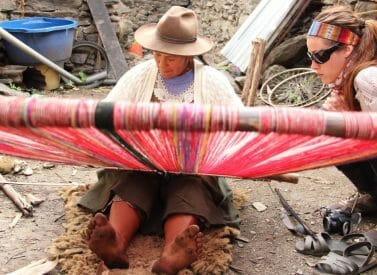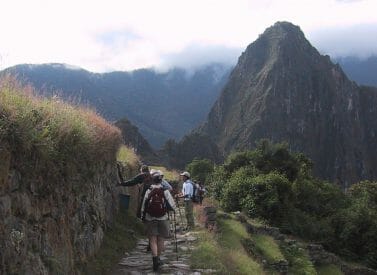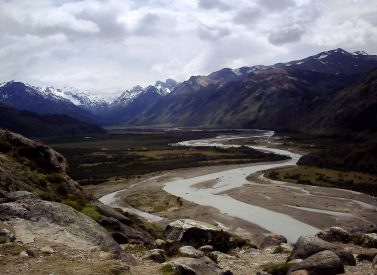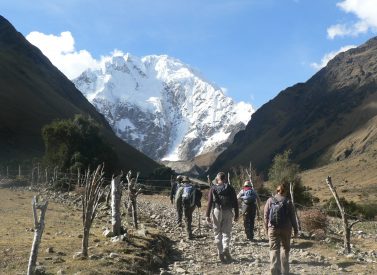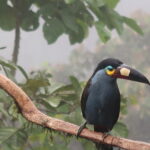
Luxury Inca Trail Tour to Machu Picchu
Travel in comfort and style to Machu Picchu with our Luxury Inca Trail trek.
You’ll reach Machu Picchu feeling refreshed as we blend the famous and wonderful Inca Trail hike with maximum camping comforts.
Our Luxury Inca Trail walk is exactly the same route as the iconic Inca Trail, just spread out over five days instead of four.
We avoid crowded campsites and ruins and enjoy the walk in a more serene manner, often at sites by ourselves.
Our top level guides and support teams ensure that this is a magical way to hike to Machu Picchu.
We include extra porters so that you can enjoy gourmet food, bigger tents and thermarests. Upgrade to deluxe (extra cost) and enjoy wine, a hot shower and more!
More on Luxury Inca Trail
We walk at a slightly lower space and use quieter campsites to allow you to fully take in the mountains and solitude of the Inca Trail.
There are strikingly different climatic zones to walk through and enjoy, as well as the challenge of the Dead Woman’s pass.
Whichever you choose, the climax of the trek is the unique feeling of arriving at Machu Picchu on foot.
This Luxury Inca Trail trek allows us to experience the Inca sites at its quietest moments.
The return to Cusco is by train, a comfortable journey with superb views of the mighty Urubamba river and our trek route.
Trip Highlights
Print Share Download as PDF-
Luxury Inca Trail tour to Machu Picchu.
-
Hike the once-in-a-lifetime Inca Trail away from the crowds and in style.
-
Great food, the best guides and secluded campsites.
-
Have Inca ruins to yourselves as you walk through various ecosystems.
-
Make the most of this unique and famous trek.
I think only one word can describe our trip and that is ‘spectacular!’.
When it comes to the trek, we wanted an adventure and that is exactly what we got! Our guide Lobo was outstanding! Incredibly knowledgable, fun, patient and inspirational in lots of ways, he contributed massively to our huge enjoyment of the hike. He was always keen to ensure that everyone was safe, happy and well fed!
The food was 5 star, we were in a group of 8 and we could not believe that night after night the chef prepared the most incredible meals, both of us agreed that we ate better at 4,000m than we did at sea level! The porters who supported the trek were also outstanding, nothing was too much trouble, everything was done with a smile and every single porter was quite literally olympic in their efforts to make sure everything (dining tent, food, toilets etc) was timed perfectly to be ready as soon as we arrived to camp.
The views were breathtaking, the hiking fantastic and a good challenge, the weather perfect and we met some incredible people on our journey and that was before we even made it to Machu Picchu - which was everything we hoped it would be and more!
Neither of us can speak highly enough of our trip. It really was one of those holidays where you come back with you heart still in the place you left. I have already been raving to all my co-workers about the trip and recommending Andean Trails - you certainly made a good impression!
The highlight was going to sleep on the second night camping and seeing the cloud sit below in a huge gulf of a valley with the mountains rising from the clouds under an incredible carpet of stars! Certainly no low points on this trip!
It was 5* - I really cannot rate anything higher - we were seriously impressed by everything!
E. and L Van der Waals, Luxury Inca Trail Tour to Machu Picchu
Full Itinerary
Day 1: Transfer Cusco to KM 82, trek to Huayllabamba, camp (L,D)
A spectacular early morning drive through the Sacred Valley of the Incas takes us to our trailhead at Km. 82 of the Machu Picchu railroad.
After getting acquainted with our trail crew we set out, crossing a footbridge to hike a gentle two hours down the Urubamba canyon, and then visit imposing sculpted Inca farming terraces and the settlement of Llaqtapata on the banks of the Cusichaca side river.
We then climb a short way up the Cusichaca valley to Huayllabamba, the last inhabited village on the trail, where we camp.
Day 2: Trek Huayllabamba to Pacaymayo, camp (B,L,D)
From Huayllabamba we begin a steeper ascent, climbing the Llullucha valley along a stream that rushes through enchanted native unca woodland.
Crossing the rim of a small plateau, we abruptly find ourselves in the puna, the treeless grasslands of the high Andes.
Here a stretch of open trail climbs beneath mighty crags to our first and highest pass, Warmiwañusca (4,200m/13,776ft) – also known as Dead Woman’s pass.
From Warmiwañusca we can look back to the spectacular snowpeaks and valleys of the Huayanay massif, and ahead to a distant view of tomorrow’s trail to the second pass. Descending a stepped stone trail we encounter our campsite in a clearing of the forested Pacamayo valley.
Day 3: Trek Pacaymayo to Sayacmarca, then to Phuyupatamarca, camp (B,L,D)
We pick up an Inca stairway and ascend again past the small Inca site of Runkuracay.
As we reach the second pass the landscape opens onto spectacular new views to the snowpeaks of the Pumasillo range. We descend again, this time to the ruins of Sayacmarca (Inaccessible Town), an intricate labyrinth of houses, plazas and water channels, perched precariously on a rocky spur overlooking the Aobamba valley.
The Inca trail, now a massive buttressed structure of granite paving stones, continues along the steep upper fringes of the cloud forest through a colourful riot of orchids, bromeliads, mosses and ferns.
At the third pass we camp by pinnacles topped with Inca viewing platforms, overlooking the archaeological complex of Phuyupatamarca (meaning cloud-level town).
Day 4: Phuyupatamarca to Machu Picchu, descend to Aguas Calientes, hotel (B,L)
We explore the wondrous maze of Inca stone towers, fountains and stairways spilling down the mountainside at Phuyupatamarca then begin a long descent through ever-changing layers of cloud forest.
An Inca stairway partly cut from living granite leads us finally to the site of Wiñay Wayna (Forever Young), the largest and most exquisite of the Inca Trail sites.
In the afternoon we follow the last stretch of trail across a steep mountainside through a lush, humid cloud-forest of giant ferns and broad-leaf vegetation. Suddenly we cross the stone threshold of Intipunku (Sun Gate) and encounter an unforgettable sweep of natural beauty and human artistry – a backdrop of twisting gorge and forested peaks framing the magical city of Machu Picchu.
We descend to Aguas Calientes and our hotel, where we check in, grab a shower, and ready ourselves for tomorrow’s guided tour.
Day 5: Guided tour of Machu Picchu, return train to Cusco, ends (B)
We return to Machu Picchu by bus and spend the day in both guided and individual exploration, visiting the most fascinating features of this astounding and mysterious Inca settlement.
Some will want to take the optional hike to the summit of Wayna Picchu for an amazing overview of the site, while others may want to investigate Machu Picchu’s multitude of hidden nooks and corners.
After a full-on experience of this glorious monument to the Inca achievement, we return to Aguas Calientes and board the return Vistadome train to Cusco.
Note: park authorities may occasionally designate different campsites than those indicated.
New regulations (August 2011) mean that the number of visitors to Machu Picchu is limited to 2,500 people per day. This means that you must pre-book your entrance to the site. The entry ticket cannot be purchased in Aguas Calientes/Machu Picchu pueblo but must be bought in advance (by us) in Cusco.
If you wish to climb Huayna Picchu or Machu Picchu mountain, places now also have to be pre/booked and come at an additional cost.
Machu Picchu mountain has to be climbed before 11am, and there are two departure times for Huayna Picchu:
Group 1 (G1): 0700 – 0800
Group 2 (G2): 1000 – 1100
The price is USD 75 including the entrance fee to Machu Picchu.
Prices From $1,940 / £1,577 per person
What's Included?
Transfer from hotel to Inca Trail in private vehicle, all camping and cooking equipment, sleeping bag, thermarests, large two-person tents, dining tent, toilet tent, emergency first-aid kit and oxygen, qualified, English-speaking Inca Trail guide, all porters (to carry 4-6kg of personal belongings and all communal kit), cook team serving high quality food with a great range of dishes, standard room at Inkaterra Machu Picchu Pueblo hotel (subject to availability), guided tour of Machu Picchu, entry to the Inca Trail and Machu Picchu, bus transfers to and from the ruins, Vistadome train from Machu Picchu to Ollantaytambo or Poroy and bus to Cusco, breakfast and lunch days 1-5, dinner days 1-3 (B = Breakfast, L = Lunch, D = Dinner).
What's Not Included?
Personal belongings, personal expenses, tips and dinner in Aguas Calientes & Cusco (day 4 + 5), international flights (we can book for these for you), insurance, entry to Huayna Picchu
Accommodation
We use four season tents, designed for all weather conditions, and with lots of space for you and your belongings.
The dining tent is spacious and has comfortable chairs for relaxing in and later enjoying your meal.
We include a night in a standard room in the Inkaterra Machu Picchu Pueblo hotel in Aguas Calientes. Upgrades are available at an extra cost.
Toilet facilities on the luxury trek
We carry a toilet tent to all the campsites, so you can avoid the camping toilets.
If you do need to go the toilet when there aren’t any toilets then do so well away from the trail and water supplies; dig a hole, and take the paper with you in a bag to deposit in one of the several bins along the way, do not leave it to blow about in the wind.
Tour Staff
We operate the Inca Trail together with our Cusco partner, owned and managed locally, in accordance with Inca Trail regulations.
On the Inca Trail we employ local staff, who are paid fair wages. We provide free life insurance to all of our porters. Tented accommodation and meals are provided for all trekking staff as well as foam mats, sleeping bags and rain ponchos.
We have also provided the staff with trekking shoes. We ensure our porters carry a maximum of only 20kg. We offer them backpacks and they generally use back supports.
Additionally, each year we donate to the communities our Inca Trail porters come from. We ask the community what is most needed and usually we are asked to provide materials (books, pencils, paper etc.) for the children and the local school.
Most of the porters are farmers and cannot afford to pay for all of the materials their kids require for school. By trekking on the Inca Trail you are directly helping the families and communities of your porters.
Meals
We can cater for almost all dietary requirements – contact us for more.
Celiacs/gluten free diets are catered for by replacing rice and pasta with quinoa, canihua and quiwicha as well as special produce such as camote (sweet potato) bread.
The luxury Inca Trail features more porters so we add in more fruits and salads than on the standard trek. Your chef has more ingredients, pots and pans to cook with and so meals are more elaborate.
Water on the trail
You will be provided with boiled water every morning, and evening – fit for drinking. There are always generous amounts available.
The sterilising tablets ‘MicroPur’ can be bought in most pharmacies in Cusco. With these you put the tablets in the water and then wait 40 minutes before drinking. Try to ensure that the mouth of the bottle is also fully sterilised, by tipping your bottle up and down and allowing sterilised water to flow out before you drink.
Activity Level
The Inca Trail requires every participant to be well acclimatised to high altitude and to be in good physical condition.
We grade this as a ‘medium’ trek because of the high altitude and consecutive trekking days.
Trekkers ideally need to be used to walking while carrying a rucksack and ideally accustomed to walking several days in a row.
However, it is also open to first time trekkers who are in good physical shape.
Approximate walking times:
Day 1: 3-4 hours
Days 2 + 3: 5-7 hours
Day 4: 4-5 hours
Day 5: 2-3 hours guided tour
Practical Information
Introduction to Peru
Peru is the perfect holiday destination for adventure travellers that want an amazing variety of activity, geography and cultural travel experiences.
The breadth of travel experiences in Peru is breathtaking – from trekking in the Andes to Machu Picchu to the tropical jungle of the Amazon, and plenty in between.
The people of Peru make it a special destination too, with its colourful and traditional street life and friendly locals.
Geography of Peru
Peru is made up of 3 distinct geographical areas: the coast, the mountains and the jungle.
The costa or coastal region is a narrow ribbon of desert 2,250 km long, crossed by fertile river valleys flowing from the Andes. It takes up 11% of the country and holds more than 40% of the population.
The cold Humboldt current gives rise to a blanket of mist – the garua – which hangs above coastal cities like the capital Lima from May to November.
Heading east, you’re soon climbing above the garua and into the Andes. The sierra, or mountainous region, covers some 25% of Peru’s territory and contains 50% of the population. The sierra inhabitants are mainly Indigenous or Mestizo, and many still speak Quechua or Aymara.
The sierra contains dozens of 6,000-metre snow peaks and volcanoes, including Huascaran (6,768m) the highest mountain in the tropics. The deep valley basins contain most of the towns and arable land; the terracing and canal systems of the Incas and pre-Incas are often still used today.
The eastern Andes are heavily forested up to 3,350m and sweep down into the Amazon Basin.
Peru’s selva or jungle makes up almost two thirds of the country’s area, but holds only about 6% of the population: the only towns with significant populations are Iquitos and Pucallpa.
Weather in Peru
You can also read about the weather of Peru in our blog.
Peru is located in the southern tropics (latitudes 0º to 18º), but climate varies significantly according to season, altitude and region.
Lima & the coast
From May to October, Lima is often overcast, but with minimal precipitation. There are sunny spells, and it’s a fresh to pleasant 13-20ºC.
At the same time, inland areas and the north coast mid to high 20’s ºC.
November to April is generally warm and sunny and Lima enjoys warm temperature of 19-25ºC, with the coast averaging 22-30ºC.
The Andes
Climate depends largely on altitude. As a rule of thumb, below 2,000m climate is mild and above 2,000m warm clothing is required for evenings, nights and early mornings.
The Andean sun is very strong.
May to Oct (dry season in The Andes)
Cusco (3,300m): Average max/min temps: 22ºC /2ºC. Average 3 or 4 wet days per month.
Arequipa (2,380m): Average max/min temps: 26ºC /9ºC. Sunny more than 340 days/year with minimal precipitation.
On highland treks: Conditions are generally dry. However, at this time of year, expect a range of conditions within a single day: cold/freezing nights at camps above 4,000m, where pre-dawn temperatures can be -5ºC; warm, spring-like mornings and afternoons; and cold evenings.
Note that mountain weather can be fickle and localised, and that precipitation is not unknown in the dry season. Expect temperatures to swing between sun and shade, sheltered and exposed ground and with altitude gain and loss. A quick-setting sun means temperatures drop fast.
In the cloud forest, e.g. around Machu Picchu, daytime conditions are generally warm or hot, and evenings cool.
Nov to March/April (wet season in The Andes)
Cusco: Average max/min temps: 23ºC /6ºC. Average 13 wet days per month.
Arequipa: Average max/min temps: 25ºC /14ºC.
On highland treks: Wetter conditions, with cooler days and milder nights than dry season. Jan-Mar usually the wettest months.
The Amazon rainforest
Year-round, weather conditions are hot and humid and there is always the risk of rain
There is a ‘dry season’ in Tambopata and Manu between May and October. The average daytime high temperature is between 25°C and 34°C and the average nighttime low is between 16°C and 22°C. Heavy downpours typically occur every few days.
Around 80% of annual average rainfall – approx 2,000 mm in Manu and Tambopata and 1,400 mm in Iquitos – occurs in the wet season Nov-April.
On rare occasions, between May and September, cold fronts from Argentina – ‘friajes’ – can sweep into southwest Amazonia and push temperatures down to 9° C. (Friajes usually last between 1 and 3 days).
Kit list
Good kit is vital for every trip.
Book with Andean Trails and get 15% off Páramo’s fantastic ethical and high performance outdoor gear.
Overview
When planning for the climatic conditions encountered in the High Andes, layering is the most practical and versatile clothing system. It’s worth remembering that our clothing keeps us warm by retaining and isolating the heat we ourselves create.
To best maintain body heat, several layers of lightweight, warm and quick-drying clothing are far more efficient than one or two thick layers. Layers should have the following qualities:
- Breathability (able to wick away the humidity produced by sweat):
- Isolation (able to keep in the warm air our body produces); and
- Impermeability (able to impede the passing of wind and water).
First (base) layer: This layer wicks the sweat away from our skin, thus helping keep the body dry and warm. To this end, synthetic fabrics such as polypropylene should be used.
Mid layers: These isloating layers should also be synthetic (e.g. the known polar linings such as polartec or windblock, which are light and insulate twice as well as wool). Very important layers for retaining body heat.
Outer layer / shell: Finally, the vital layer which protects us from climatic adversities. A breathable, wind-proof and waterproof anorak, such as Goretex.
Give plenty of thought to kit selection, and try to keep weight down.
We provide thermarests on the trek but you have to bring (or RENT, please ask) a sleeping bag (-5ºC).
We also carry an extensive first aid kit & oxygen on all trips, but these are generally for emergencies only.
Below is a more detailed guide.
Detailed kit list
- 2 pairs synthetic inner socks (e.g. polypropylene, thermastat, coolmax) and 2 pairs thick loop-stitch/wool socks for cold.
- Trekking boots – should be well broken-in, waterproof and provide good ankle support.
- Trainers/sandals for city-wear, evenings at lower camps & river crossings.
- Base layer leggings (1 pair).
- Thick fleece leggings (or salopettes) (1 pair).
- Goretex-type over-trousers (or salopettes) (1 pair).
- Trekking trousers (2 pairs).
- Shorts – wear sparingly in early stages at altitude, as sun burns.
- Thermal base layer shirts (2).
- Microfleece mid-layer shirt (1).
- Shirt/t-shirt 1 or 2 for lower altitudes. Long-sleeved, collared shirt protects against sun
- Fleece jacket or similar (1).
- Warm jacket (down or synthetic). For camp and upper slopes.
- Waterproof Goretex-type jacket.
- Broad-brimmed sunhat, essential.
- Warm hat, fleece or wool. (N.B. Up to 30% of body heat can be lost through the head).
- Sunglasses with UV filter.
- Scarf for cold.
- Bandanna – to protect neck from strong sun.
- Light inner gloves
- Warm gloves, e.g. fleece, and outer waterproof gloves or mittens (1 pair)
- Mittens allow you to keep the fingers together, and better conserve heat (though they also make it difficult to perform certain tasks).
- Daypack (at least 30 litres). Comfortable and with waterproof lining or cover.
- Pair of telescopic trekking poles (optional, can be rented, please ask). Note: You must have rubber tips on your poles.
- Duffel bag or large rucksack for extra clothing, carried by horse/mule/porter while you are trekking.
- Water bottle (2 litres approx.) & purification tablets.
- Personal first-aid kit to include: painkillers, plasters (band-aids), moleskin, anti-biotic cream, general antibiotics (ask your GP), after-bite (tiger balm), anti-diarrhoea tablets, throat lozenges, re-hydration salts & personal medication.
- Insect repellent.
- Towel & wash-kit.
- Wet Wipes/antiseptic hand-wash cream.
- Sunscreen (factor 30+) and lip salve.
- Head-lamp (plus spare bulb and batteries).
- Penknife.
- Travel alarm clock.
- Plastic bags – ‘Zip-loc’ & tough bin liners.
- Camera and film / memory cards (take at least twice the amount you think you will need!).
- Book, e-book, mp3 player/ipod or other for free time.
- Binoculars.
- Spanish/English phrasebook.
- Extra snacks i.e. cereal bars or favourite chocolate bars.
All other non-personal trekking camping gear e.g. tents, cutlery etc is provided.
Miscellaneous others
- Money belt.
- Passport.
- U.S. dollars cash, mixed-denomination notes, undamaged and unmarked.
- ATM cash/credit card.
- Any inoculation certificates.
- Personal & medical insurance certificates.
- Presents e.g. Postcards from home.
- Comfortable clothes for travel, smart clothes for night life.
ATOL holiday protection
Andean Trails has 25 years of experience of putting together the best South America holidays.
We pay a fee to the CAA for every licensable passenger we book since we hold an Air Travel Organiser’s Licence granted by the Civil Aviation Authority. In the unlikely event of our insolvency, the CAA will ensure that you are not stranded abroad and will arrange to refund any money you have paid to us for an advance booking.
We also offer ATOL (Civil Aviation Authority) protected holidays to give our customers peace of mind when booking and travelling.
When you buy an ATOL protected air holiday package from Andean Trails Ltd you will receive a Confirmation Invoice from us confirming your arrangements and your protection under our Air Travel Organiser’s Licence number 6275.
You can read more about ATOL, who is covered and what protections you have if not ATOL-covered, on our ATOL page.
What is ATOL?
The CAA’s ATOL scheme offers protection to your money and your holiday if you book with us. Not everybody is covered (see ‘Who is covered?’ for more), as you must purchase an ‘air package holiday’ with Andean Trails to be protected.
And ‘air package holiday’ is defined as including a flight and some ground services (hotel, transfer, trek etc). This is also known as an ‘ATOL-protected holiday’.
Who is covered?
To be covered by ATOL, you must book a flight and some ground services with us and be from the UK. If you are from the UK and only book ground services and no flights, you are not covered by ATOL (see below for more on how non-ATOL clients are covered).
If you are outside the UK and buy flights with us, you will be ATOL protected IF any of the flights booked with Andean Trails touches/stops in the UK at any point during your holiday package booked with us.
If you buy your flights elsewhere, please check with that agent if you are ATOL protected. Be careful with online flight purchases and make sure you know what protection you have, if any, before paying for flights.
Not all holiday or travel services offered and sold by us will be protected by the ATOL scheme. Please ask us to confirm what protection may apply to your booking.
For land only holidays not involving any air travel, in accordance with “The Package Travel, Package Holidays and Package Tours Regulations 1992”, all UK passengers booking with Andean Trails Ltd. are fully protected for the initial deposit and subsequently the balance of all money paid to us, arising from cancellation or curtailment of travel arrangements due to the insolvency of Andean Trails.
I’m not ATOL covered, what protection do I have?
If you are not ATOL covered, any payments you make to us go to a Trust account.
We can only access this money once your tour has been completed, meaning that if anything happens to Andean Trails Limited while you are on holiday, then your money is secure and you can either complete the trip or be able to make it home.
If you pay for your holiday with a credit card, some offer payment protection – please check with your cardholder.
You also should have cancellation protection written into your insurance (which we recommend you have at the time of booking) in case you need to cancel.
Peru’s Amazon Rainforest
Peru boasts in its Amazonian region a vast swathe of world-class tropical wilderness with several rain forest and cloud forest reserves which are home to an immense diversity of wildlife.
Accessible from Lima, Iquitos or Cusco, the Amazon jungle is just a short flight away.
In Peru’s southeast lies the extraordinary region comprising the Tambopata National Reserve and the Bahuaja Sonene and Manu National Parks, with the greatest animal and plant diversity anywhere in the world.
Whether you choose to base yourself at a comfortable lodge or enjoy a more demanding camping trip, you can be sure of a unique, exhilarating and unforgettable experience.
Arequipa & Colca Canyon, Peru
The beautiful colonial city of Arequipa is replete with history and culture, and is the gateway to the condors of Colca Canyon.
Nestled at 2,325m/7,627ft, the ‘white city’ sits at the foot of three tremendous volcanoes: El Misti (5,821m/19,098ft), Chachani (6,075m/19,930ft) and Pichu Pichu (5,542m/18,182ft).
Arequipa’s attractions include the Cathedral, Compañía de Jesús Church, Santa Catalina Convent and the Dama de Ampato (Juanita Mummy) Museum.
With a year-round spring climate and sunshine guaranteed for 300 days of the year, it is the perfect place to begin acclimatising before continuing upwards.
Nearby is the famous Colca Canyon. At hundred kilometres long, this incredible gorge is said to reach a maximum depth of 3,400m/11,155ft – twice that of the Grand Canyon.
An overnight tour to Colca gives you the chance to see the iconic, soaring condors of the canyon.
Cusco, Peru
Cusco is the archaeological and cultural capital of South America.
The one-time centre of the vast Inca Empire is a bustling highland city with bags of character.
Its whitewashed streets and plazas feature a fascinating blend of Inca and Spanish colonial stonework and offer endless possibilities for exploration.
You don’t have to venture far to find outstanding examples of high quality Inca architecture, including the monumental temple fortress of Sacsayhuaman.
There is also the fertile farming land of the Sacred Valley on the doorstep, with many Inca terraces, temples and fortresses, plus colourful local markets and small villages.
At night, Cusco offers an excellent array or restaurants and bars plus the continent’s best Andean folk music scene.
Kuelap, Peru
In the northeast of Peru lies Kuelap – the jewel in the massive archaeological crown of the Chachapoyas Cloud People.
The mystical structure of Kuelap – dubbed the Peru’s second Machu Picchu by locals – is 1,200 years old.
It features massive limestone walls towering 60 feet, pottery, bones and hundreds of mysterious round stone structures, and away from the crowds of other sites.
This is a remote area of sub-tropical valleys, half way down the eastern slopes of the Andes. The jungle is impenetrable, dense with low trees, bromeliads, bamboos, orchids and mosses.
Lake Titicaca, Peru
Lake Titicaca, at around 4,000m/13,123ft above sea level, is a vast shimmering body of water on the Peru/Bolivia border.
It is the world’s highest navigable lake, set against a breathtaking background of towering ice-covered Andean mountain peaks.
The islands and shoreline of Lake Titicaca support many Indian communities, including the well known floating islands of Uros and the more remote islands of Taquile and Amantani. Here, traditions are strong and it appears time really does stand.
Agriculture, fishing, knitting and weaving are important to the islanders and by staying a day or two you gain just a small insights into this traditional way of life.
Islanders welcome tourists into their homes and this is a wonderful opportunity to experience island life.
Lima, Peru
Lima, the capital city of Peru, is a vibrant bustling place with a wide variety of things to do.
Stroll or bike around the historic centre, visiting the many museums or just chilling out in a café or restaurant in Miraflores.
In Parque Kennedy you can sit outside in Parisian fashion and watch the world go by in cafes and restaurants, or walk to the shore and the cliffs overlooking the Pacific Ocean.
There are a number of artisan shops & market stalls, plus a big silver jewellery trade, and a burgeoning number of top end restaurants with delicious food.
The centre of Lima is home to impressive Colonial architecture – Plaza de Armas has the Palace, official residence of the president, on one side, and on another is the Cathedral.
San Francisco Church, home of the Catacombs, is well worth a visit, as is the Inquisition museum.
Machu Picchu, Peru
Nothing says Peru quite the way Machu Picchu does.
The Lost City of the Incas, perches dramatically on a ridge-top 400 metres above the Urubamba river. The extensive site, with its many terraces, temples and palaces, is set amid a beautiful landscape of deep gorges and thickly forested mountains.
When Machu Picchu was rediscovered early in the 20th century and cleared of forest, it was found to be very well preserved. It has since presented archaeologists with many unanswered questions regarding the role it played in Inca times.
The sense of grandeur, whether you arrive on the Inca Trail or not, is impressive.
Try to arrive early at the site to enjoy it at its best – and late afternoon can often see you almost alone in the ruins.
The Cordillera Blanca and Huayhuash, Peru
North east of Lima, the Cordillera Blanca offers fantastic mountain scenery and some of the best trekking and climbing in the Andes.
The Cordillera Blanca boasts dozens of peaks over 6,000 metres, including Peru’s highest Huascaran at 6,768m/22,205ft above sea level.
The Blanca range also contains the world’s largest concentration of tropical glaciers.
This is an ideal destination for treks, from just a few to 12 days or so and also an ideal starting place for learning or improving mountaineering skills.
The nearby Huayhuash mountain range contains a dazzling array of snow peaks including seven summits above 6,000 metres.
This is a trekking paradise with breathtaking majestic panoramas and stunningly remote and picturesque camping spots. There is no better place to visit to get away from it all.
Available Dates


Dates & Prices
Prices From $1,940 / £1,577 per person
Guide price, two people, shared tent/room basis
Four people: $1,780pp
Hotel upgrades available at extra cost
Shorter/longer treks possible
Single supplement applies
Can’t find what you’re looking for? Get in Touch
+44 (0)131 378 5593
+44 (0)131 554 6025



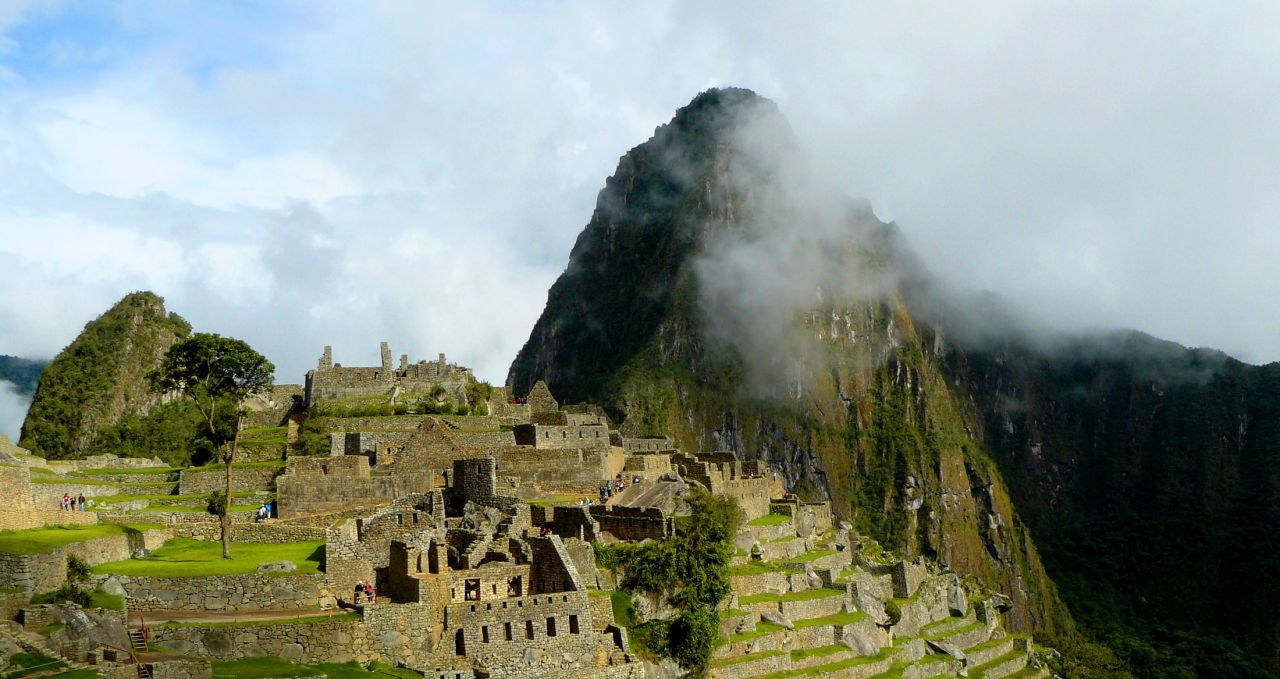
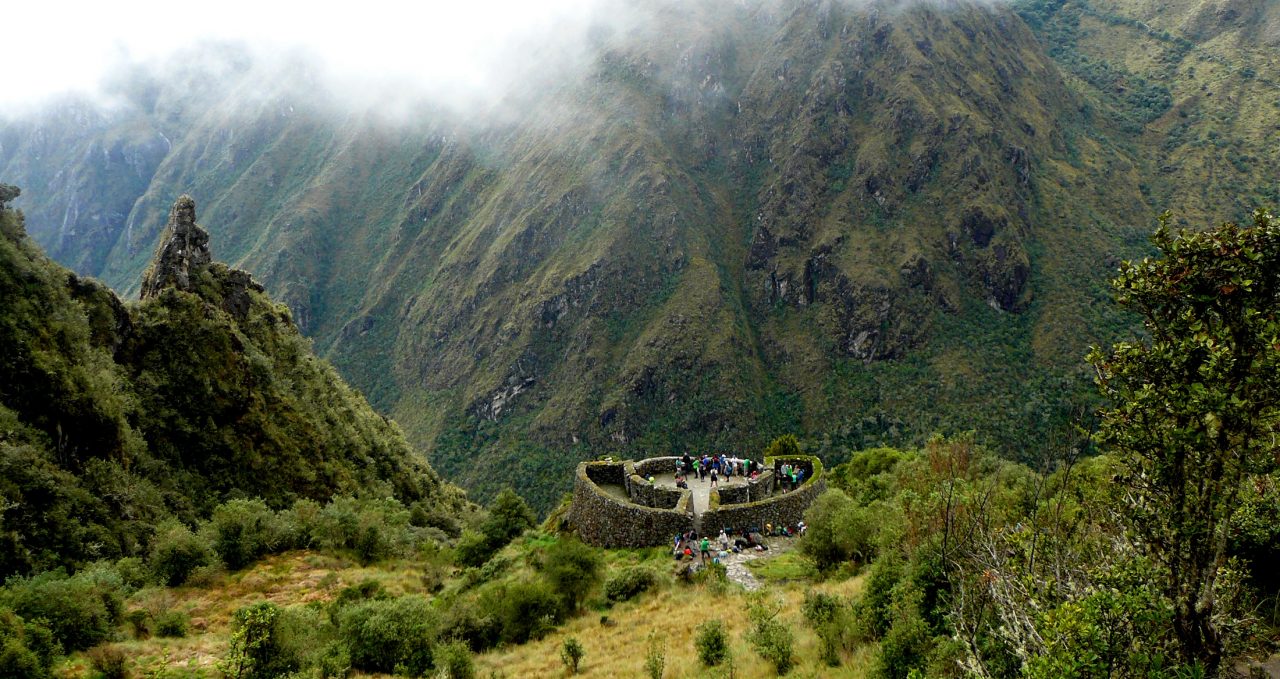
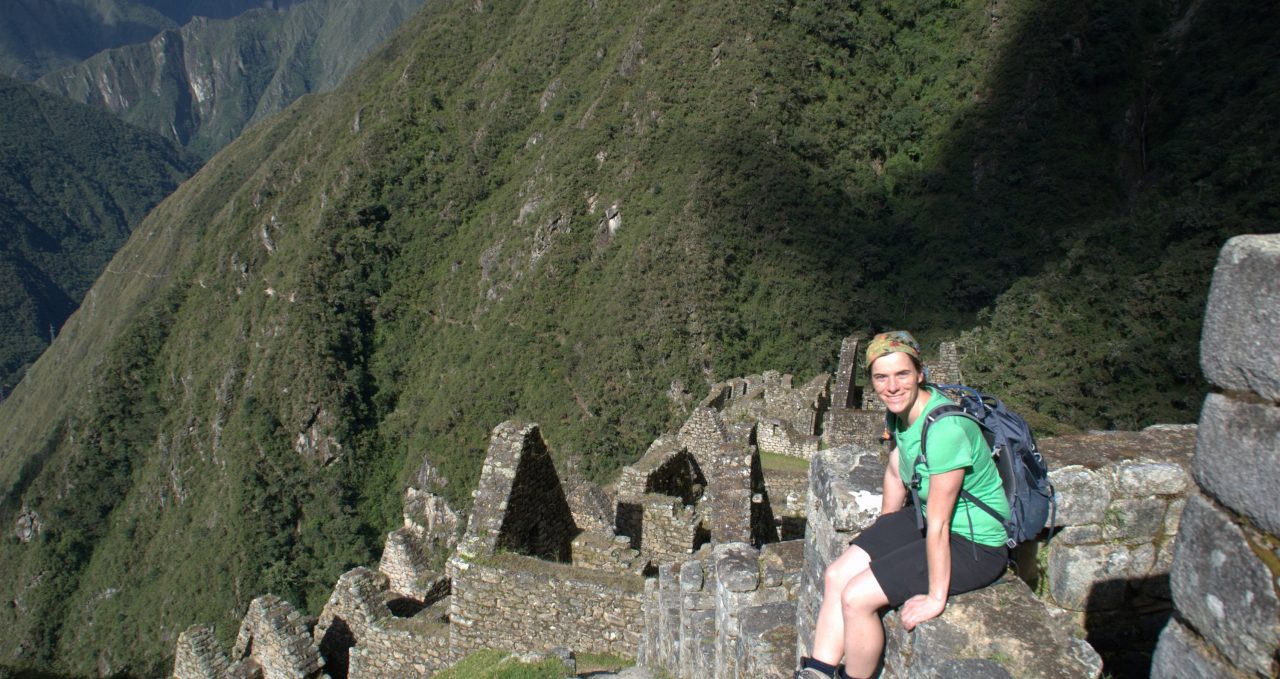
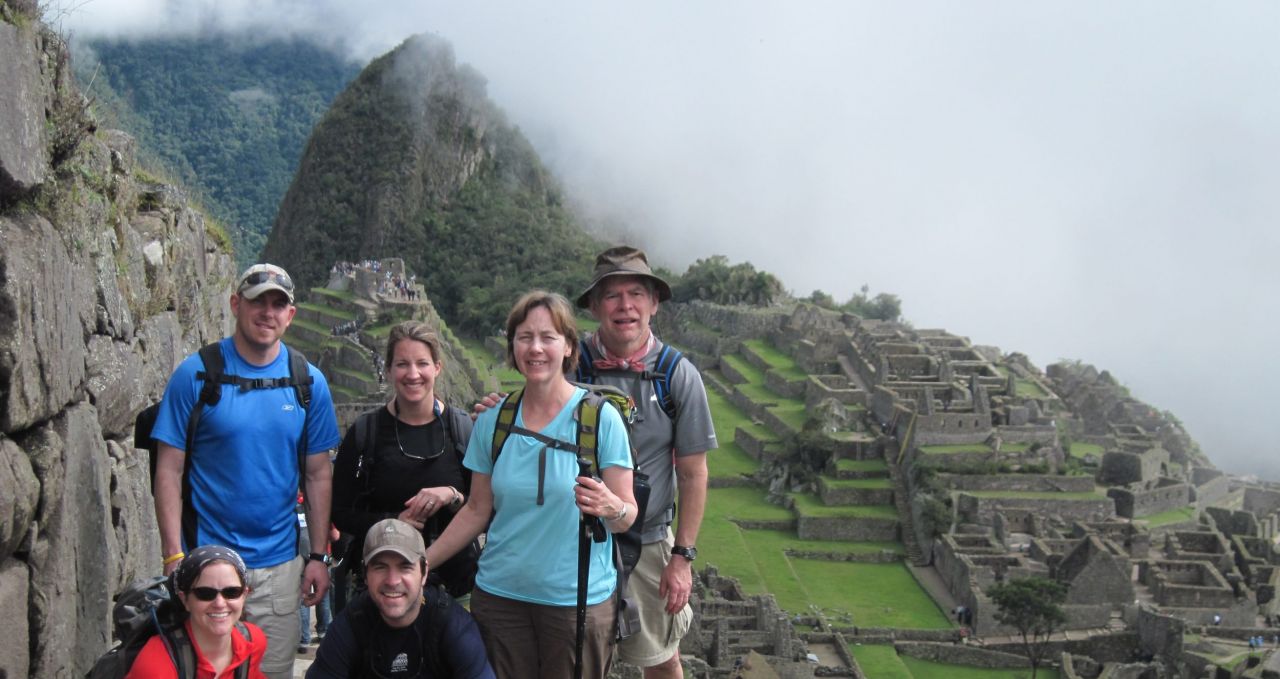
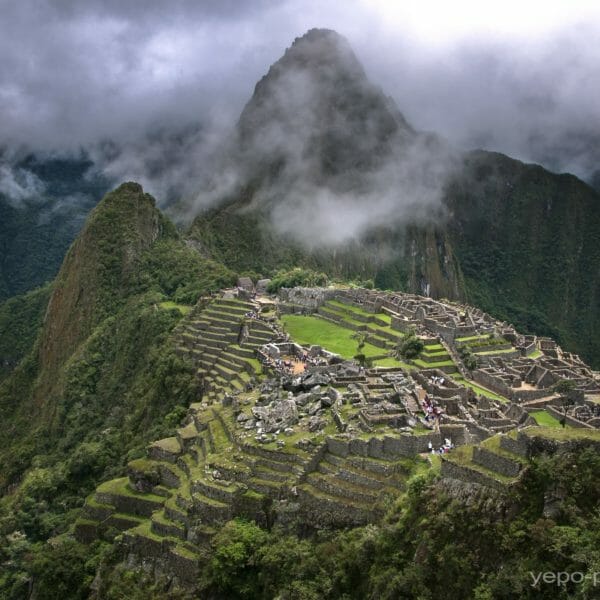
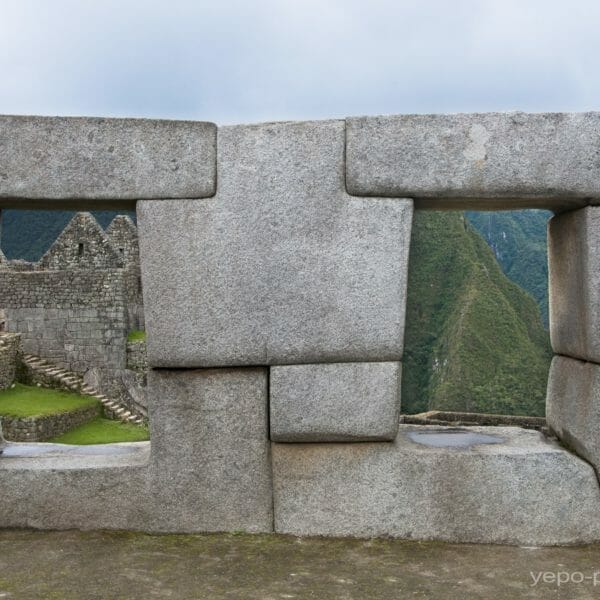

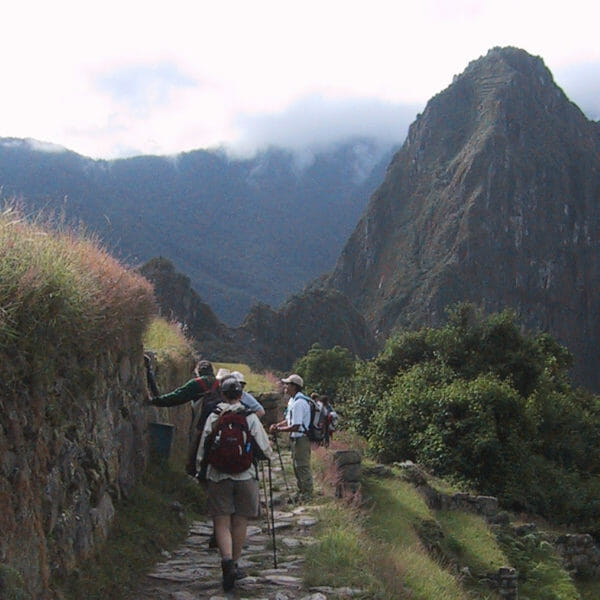
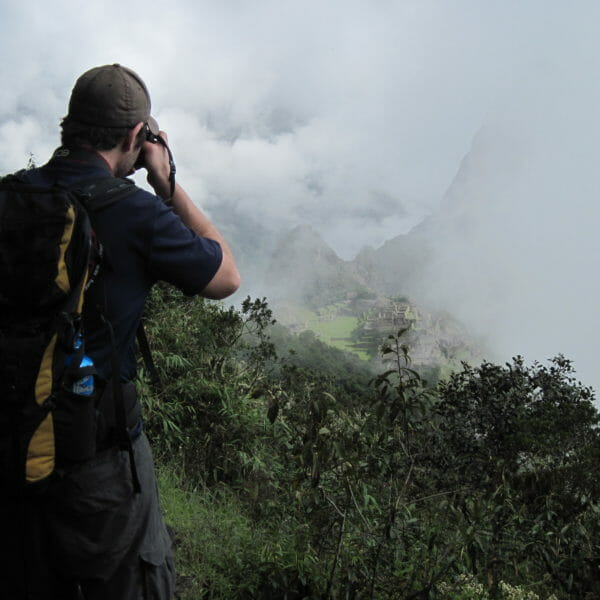
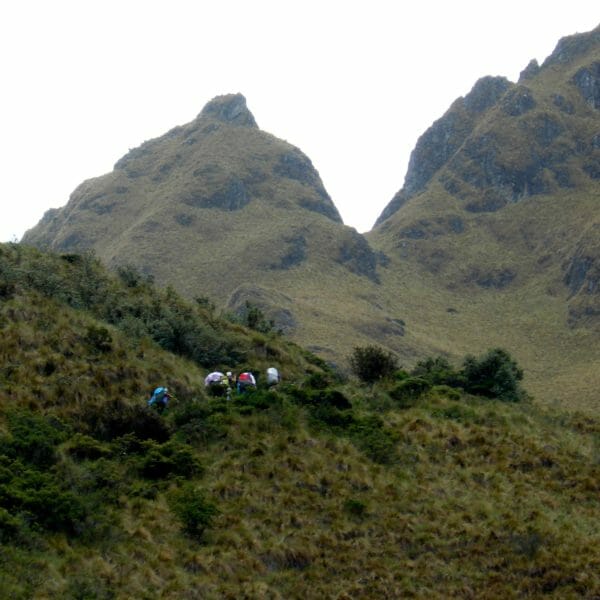
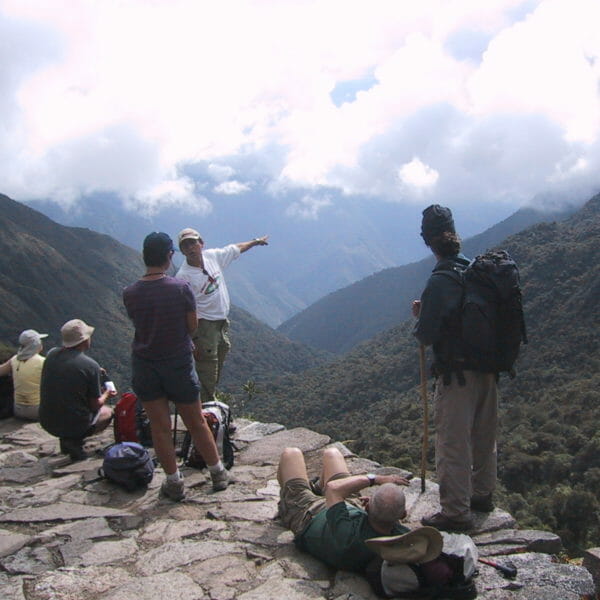
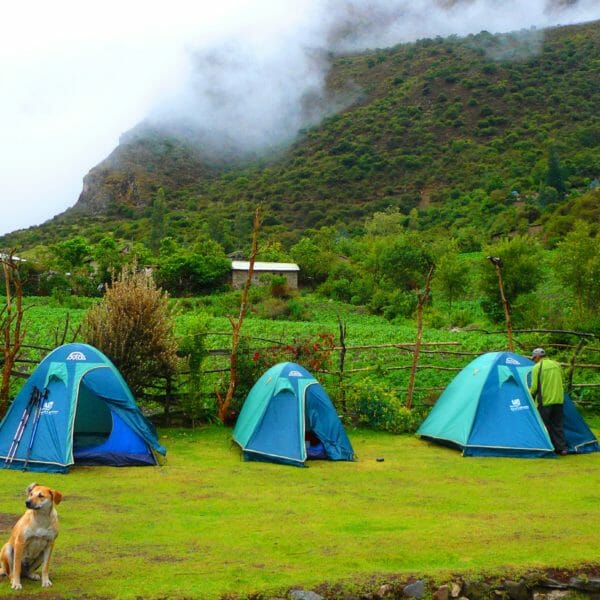
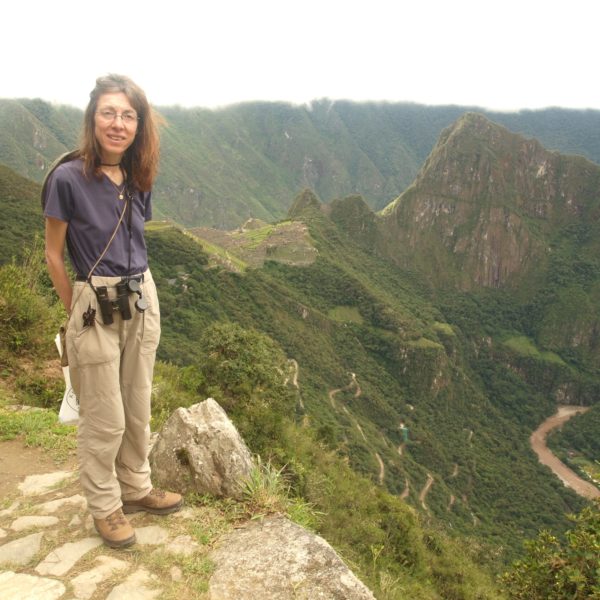
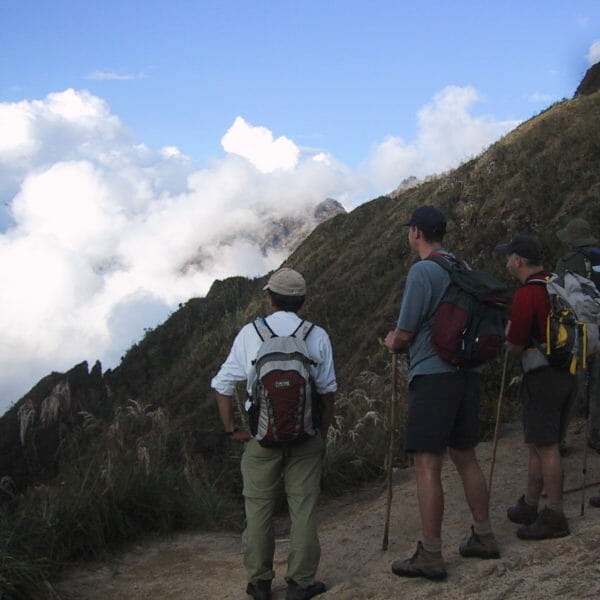
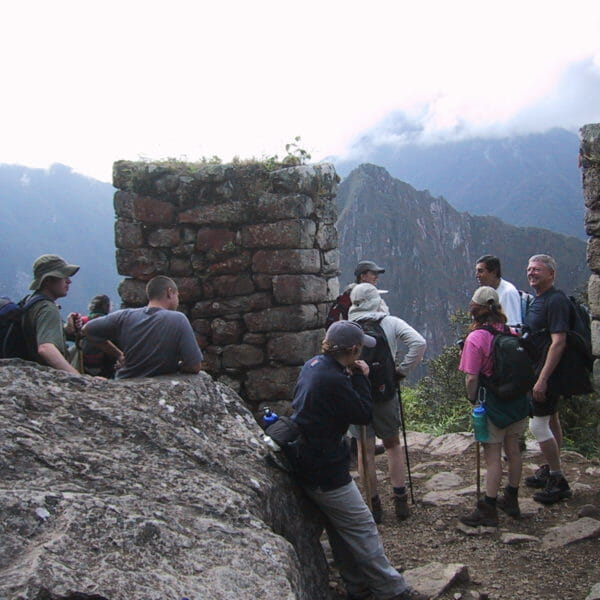
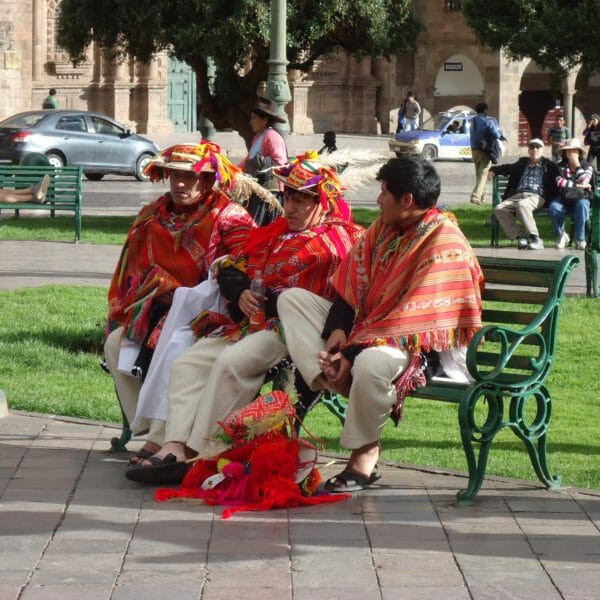
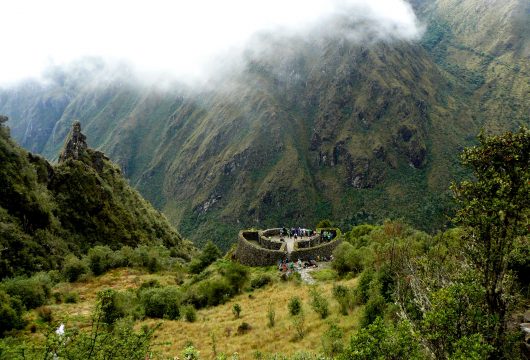
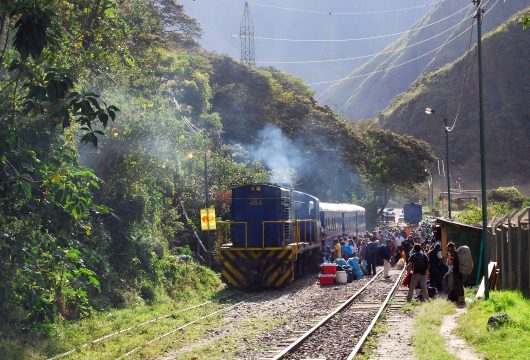
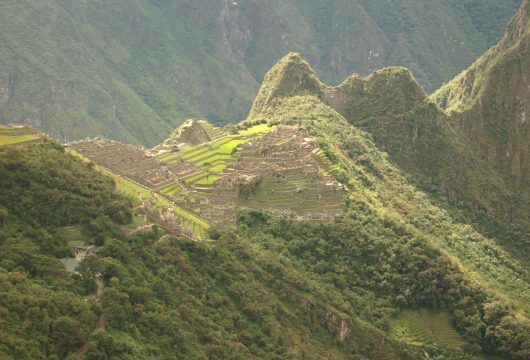
 a Group Tour
a Group Tour
 a Tailor Made Tour
a Tailor Made Tour
